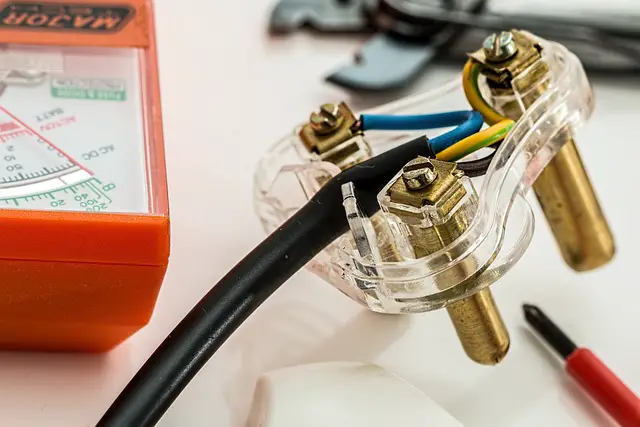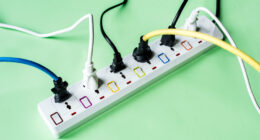“Neutral” in electrical systems carries current and returns it, while “earth” (ground) is a safety connection to the Earth, usually at 0 volts.
TL;DR Neutral Wires Vs. Earth Wires
Neutral wires are part of the electrical circuit that carries current back from various outlets and appliances to the power source. They help maintain a balanced flow of electricity, preventing overloading or short circuits. Without a neutral wire, our electrical systems would be chaotic and unreliable.
Earth wires provide an additional layer of protection against dangerous electric shocks. By connecting metal parts of appliances or equipment to the ground through a grounding system, any stray currents can safely dissipate into the Earth instead of passing through someone’s body. This protects individuals from potential harm.
The Purpose of Neutral wires

Neutral wires play a crucial role in our electrical systems, acting as the return path for electric current. When you flip a switch or plug in an appliance, electricity flows from the power source through the hot wire and into your device. But once it has completed its journey, it needs somewhere to go. This is where the neutral wire enters the scene.
Unlike the hot wire that carries electricity to your devices, the neutral wire provides a safe pathway for electrical currents to flow back to their source. It acts as a balance, ensuring that there is no excess or uncontrolled build-up of electricity within your home’s wiring system.
You can think of the neutral wire as being like a safety net that catches any stray electrical currents and directs them away harmlessly. By providing this pathway for returning current, neutral wires help maintain proper voltage levels throughout your home’s circuits.
In addition to facilitating smooth electrical flow and maintaining voltage stability, neutral wires also serve another important purpose: they provide protection against electric shock hazards. Any imbalance between hot and neutral wires could result in potentially dangerous situations where stray currents might find alternative paths through grounded objects or even through people.
The Purpose of Earth Wires

When it comes to electrical systems, safety is of paramount importance. That’s where earth wires come into play. These copper or aluminum conductors are specifically designed to protect us from electric shocks and prevent damage to appliances and devices.
Earth wires are an essential component of grounding systems in residential, commercial, and industrial buildings. Their primary purpose is to provide a safe pathway for electrical current in the event of a fault or leakage. In other words, they redirect excessive electricity away from people and equipment and discharge it safely into the ground.
By connecting all metallic parts of electrical installations (such as switchboards, outlets, pipes) with an earth wire, any stray currents that might otherwise pose a risk can be effectively neutralized. This helps maintain voltage stability while minimizing potential hazards.
Furthermore, earth wires also help protect sensitive electronic equipment from power surges caused by lightning strikes or faulty wiring. They act as a shield against these unpredictable events by providing a low-resistance path for the surge energy to dissipate harmlessly into the ground.
Earth wires serve as our safeguard against electric shocks and protect valuable electronics from power surges. Without them in place, we would be vulnerable to potentially life-threatening accidents and costly damages.
Neutral Wires Vs. Earth Wires – Key differences
| Aspect | Neutral Wire | Earth (Ground) Wire |
|---|---|---|
| Function | Carries current back to the source (usually the electrical panel) | Provides a path for safety in case of faults, preventing electric shock or fires |
| Current Handling | Typically carries normal operating current and is a part of the circuit | Carries minimal current during fault conditions; usually carries no current during normal operation |
| Voltage Potential | Near 0 volts, used as a reference point for the circuit | Always at 0 volts, directly connected to the Earth or ground |
| Color Coding (US) | Usually white or gray | Green or bare copper (US) |
| Safety | Primarily for circuit operation | Primarily for safety during fault conditions |
| Connection in Outlets | Connected to the neutral bus in the electrical panel | Connected to grounding rods or metal plumbing |
| Circuit Protection | Often connected to a circuit breaker or fuse | Not connected to circuit protection devices |
Image Credits
Featured Image By – Michal Jarmoluk from Pixabay
Image 1 By – Steve Buissinne from Pixabay
Image 2 By – Michal Jarmoluk from Pixabay








